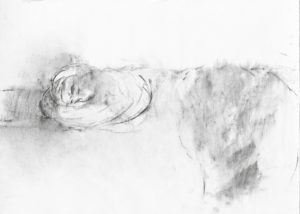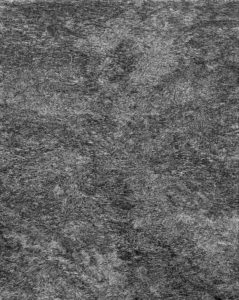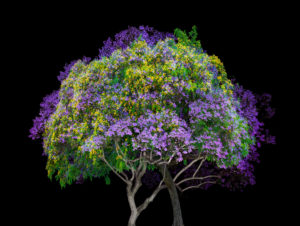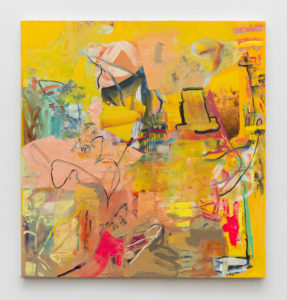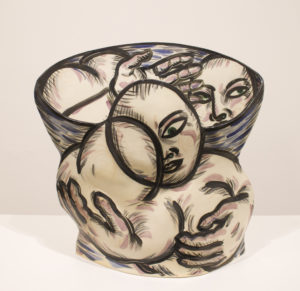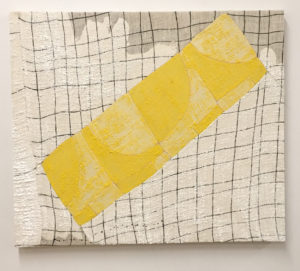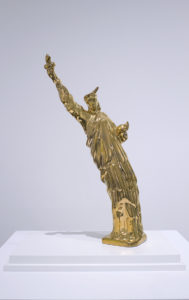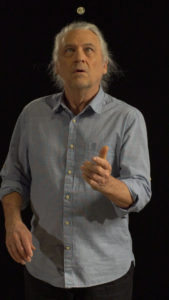June 12, 2019—August 17, 2019 | Reception: Thursday June 13, 5:00 - 7:00 pm
James Harris Gallery is pleased to announce the special exhibition celebrating 20 years of James Harris Gallery in Seattle! In this show, we will be selecting 20 artists who have a history with the gallery and have made significant contributions to the art world at large. We are proud of these artists as well as thankful that we have been able to support them and many others over the past two decades!
Richard Rezac
Richard Rezac (b. 1952, Nebraska) creates refined, and elegant objects comprised of pure reductive forms; his inspiration drawn in part from emotive encounters with architectural and design details situates his work closely to the Post-minimalist artists of the 1980s. Human in scale and mounted on the wall, suspended from the ceiling, or placed on the floor, Rezac’s sculptures open viewers to close-looking and reflection upon the forms. Surfaces of painted and natural wood, aluminum and bronze contain subtleties that reveal the pristine sculptures as actually handmade. Richard Rezac has received prestigious awards including the John Simon Guggenheim Memorial Foundation Fellowship, the Joan Mitchell Foundation Award, Louis Comfort Tiffany Foundation Award, and the Rome Prize Fellowship from the American Academy in Rome. He has exhibited at the Art Institute of Chicago, Museum of Contemporary Art- Chicago, Yale University Art Gallery, Aspen Art Museum, Portland Art Museum and others. Public collections include the Art Institute of Chicago, Dallas Museum of Art, Portland Art Museum, Detroit Institute of Art, and the Smart Museum at the University of Chicago, among others. Rezac lives and works in Chicago, IL where he is Adjunct Professor of Sculpture, Drawing, and Graduate Advising at The School of the Art Institute of Chicago (SAIC).
(copied from Rhona Hoffman)
Viola Frey
Many people think of Viola Frey as a maker of ceramic objects. Formerly trained as a painter, she studied with both Richard Diebenkorn and Mark Rothko, Frey’s practice incorporated painting, drawing and even photography. Frey was a cultural observer and her work reflected how she interpreted the world. One core theme explored throughout her career was the social commentary on the power structure between male and female and the roles they played during her lifetime. This investigation is prescient today with the continued struggle for equal rights and the upward path to break the glass ceiling. Her work was strongly influenced by her passion for art history, and her resulting imagery can often be viewed through this lens.
Amir Zaki
A firm believer in the transformative power of the photographic image, Zaki images are rooted in the history of the medium and uses it to shed light on the means of representation. Over the last 16 years, Zaki has pushed the physicality of the photograph’s two dimensional construct, allowing it to exist on its own and also exploring its own object-ness. In order to capture and record the original site, Zaki’s representations depict the complexity of place in terms of interactive evolving experience, an ongoing ecological intervention. The artist responds to the shifting contemporary landscape where nothing is permanent, constructing his own visual language to illustrate an entire mythology of place.
Amir Zaki lives and works in Southern California. He received his MFA from UCLA in 1999 and has been exhibiting nationally and internationally since graduating. He is a full professor at the University of California at Riverside. His work is included in many museum collections including the Hammer Museum of Art, Los Angeles County Museum of Art, New Museum of Contemporary Art, Orange County Museum of Art, Santa Barbara Museum of Art, and the Whitney Museum of American Art, among others.
Bing Wright
Wright has always been fascinated by the correlation between the photo and a mirror, both being silver based picture planes. At the beginning of his artistic career, Wright was exposed to the potential of the medium by John Szarkowski’s legendary exhibition Mirror and Windows in 1978, which reconstructed the framework of the photographic image as a two-dimensional pictorial surface into a conceptual space. With a postmodern perspective of the photographic image, the medium expanded into diverse practices that continue to reorient our relationship to photography.
Bing Wright was born in Seattle in 1958 and received a Bachelor of Arts in Art History from Columbia University, New York. His work been shown in exhibitions at the New Museum, New York; White Columns, New York; the Queens Museum of Art, New York; and the Tang Museum and Art Gallery, Saratoga Springs, among others. His work is in several public collections, including The Museum of Modern Art, the Portland Art Museum, the Seattle Art Museum, Goldman Sachs, JP Morgan Chase Bank, and Citigroup. Wright recently curated an exhibition of 1970s photography from the collection of the Washington Art Consortium. He lives and works in New York City.
Akio Takamori
Takamori was a seminal figure in ceramic art, whose work over the past thirty years has left an enduring impact on the Pacific Northwest arts and the medium itself. His work is often autobiographical, drawing on his life in Japan, his family, and mythological themes. He is known for his coil-built figurative sculptures in which the narrative painting defines the form. Takamori explored themes of cultural identity by engaging the history of Eastern and Western aesthetics. Bold form and color defines his body of work, which is highly expressive of human emotion and sensuality.
Akio Takamori was born and raised in Japan. He has been exhibiting in the United States, Europe and Asia since the mid 1980s. Takamori received his BFA from the Kansas City Art Institute in 1976 and his MFA from the New York State College of Ceramics, Alfred University in 1978.
Takamori’s work is included in numerous collections including the Nelson-Atkins Museum of Art in Kansas City, Los Angels County Museum of Art, Victoria & Albert Museum in London, Ariana Museum in Geneva, the Seattle Art Museum, and the Museum of Arts and Design in New York City. He is the recipient of numerous awards, including three National Endowment for the Arts Visual Artists Fellowship Grants (1986, 1988, 1992), the Joan Mitchell Foundation Painters and Sculptors Grant (2006), and the USA Ford Fellowship (2011). Takamori was a professor of art at the University of Washington. He lived and worked in Seattle.
Alexander Kroll
Alexander Kroll is a painter that works mainly in an abstract expressionist style. However, his works have fluorescent color palettes and are made on a large-scale to bring them into the contemporary art world. The colors in his works are layered and work together in ways that create a kind of rhythm in the works. It also allows viewers to see the process of how Kroll’s works came to be. Painting, for the artist, is a conversation in which one mark leads to the next; and one completed work leads to another.
His work has been exhibited at CB1 Gallery (Los Angeles, CA), ACME, (Los Angeles, CA), Lincoln Center (New York, NY), Torrance Art Museum, (Torrance, CA), Jessica Silverman Gallery, (San Francisco, CA), The UCLA New Wight Gallery (Los Angeles, CA), The Ben Maltz Gallery at Otis College of Art and Design (Los Angeles, CA), The Armory Center for the Arts (Pasadena, CA) and many others. Kroll received his BA from Yale University followed by MFA from Otis College of Art and Design in 2008. He currently lives and works in Los Angeles, California.
Squeak Carnwath
Squeak Carnwath is a painter and printmaker who uses text, color field painting, and a wide variety of recognizable symbols to make interesting, engaging, and relatable works. Her works have the intimate feel of a diary, but acknowledge universal themes that are familiar to every viewer. Her paintings work together to form a kind of visual conversation within the spaces that they are displayed. Carnwath utilizes traditional painting techniques such as trompe l’oeil and symbolism, while also making statements that question the viewer’s thoughts and emotions. Carnwath wants the viewer to make connections between words, objects and shapes; connections that often evoke moments of humor and sadness. Carnwath currently lives and works in Oakland, California.
She has received numerous awards including the Society for the Encouragement of Contemporary Art (SECA) Award from San Francisco Museum of Modern Art, two Individual Artist Fellowships from the National Endowment for the Arts, a Guggenheim Fellowship and the Award for Individual Artists from the Flintridge Foundation. Carnwath is Professor Emerita at the University of California, Berkeley.
Efrain Almeida
Efrain Almeida is a sculptor using wood as well as bronze to create realistic sculptures that reference sexuality, religion, nature, humanity and personal identity on an intimate scale. He also uses the medium of watercolor to create works in conversation with his sculptural pieces. Almeida references his own history and memory of his home country of Brazil as well as the art historical canon. Almeida works on a small scale drawing the artist in and creating an intimate relationship between the viewer, the artwork, and the exhibition space. Almeida has had five solo exhibitions at James Harris Gallery, the latest show being “Trance” in 2017.
Almeida was born in the state of Ceará, in 1964. Currently, he lives and works in Rio de Janeiro. His most noteworthy exhibitions have included Marcas – a retrospective show concerning his work held in 2007 at Estaçăo Pinacoteca, in Săo Paulo – and his participation in the 2010 Bienal de Săo Paulo. His work figures in various public and private collections in Brazil and abroad, including those of the Museum of Modern Art, New York (USA), Museu de Arte Moderna de Săo Paulo, Săo Paulo (Brazil), Centro Galego de Arte Contemporânea, Santiago de Compostela (Spain) and Toyota Municipal Museum of Art (Japan).
Mary Ann Peters
“I work from the premise that images are never neutral and that they sustain layered meaning from the inception of an idea to the completed piece. Historical narratives, architecture, science, personal heritage, politics and questions of perception have all played a part in my thinking over the years. I look for seemingly disparate elements that can coalesce and redefine a topic. I have traveled extensively, most frequently in non-Western cultures. Traveling has informed my understanding of the global roots of aesthetics. It consistently defines for me those social practices that provide outlines for cultural inquiry, including which ethical questions should be considered or supported. In the end I work to the afterimage of the viewer and the potential discourse that might ensue. The kiss of death for any artist is the work that no one can remember.”
- Mary Ann Peters
Mary Ann Peters lives and works in Seattle, WA She received an MFA from the University of Washington in 1978. She has received numerous awards including an Art Matters Foundaton Grant, New York that allowed her to travel to Paris and Mexico City to research the migration from the Middle East after World War II, a grant from The New Foundation, Seattle in 2014, a MacDowell Fellowship in 2010, a Jentel residency in 2009, the Northwest Institute of Architecture & Urban Studies in Italy (NIAUSI) residency in 2003 and the Neddy Fellowship from the Behnke Foundation in 2000. Collections include Microsoft, Seattle Art Museum, 4Culture, Tacoma Art Museum, and others.
Leiko Ikemura
Born in Tsu, Japan, Leiko Ikemura immigrated to Europe at age twenty-one, landing first in Spain where she studied literature and painting at the Academy of Fine Arts in Seville. She moved to Switzerland in the early 80s, where she began to exhibit her work in group exhibitions. In 1983 her first major solo exhibition was held in Bonn, launching her career in Germany where she eventually moved and has continued to live and work, teaching painting the Berlin University of Fine Arts from 1992 to 2015. Ikemura’s work is documented in numerous catalogues and books, and is included in internationally prominent public collections including Musée National d’Art Moderne, Centre George Pompidou, Paris, France; The Kunstmuseum Basel, Basel, Switzerland; the Kunstmuseum Linz, Lentos, Museum of Modern Art Linz, Austria; the National Museum of Modern Art, Tokyo, Japan; and the National Museum of Contemporary Art, Osaka, Japan. Her work has been shown in numerous exhibitions throughout Europe and Asia, and recently at the Nevada Museum of Art. She lives and works in Cologne and Berlin.
Gary Hill
Gary Hill is a pioneering artist of new media and video work. His video works incorporate commentaries on society and culture as well as bringing in poetic themes and ideas. Hill considers video as a medium to be the most receptive, flexible, and far-reaching mirror of consciousness. He creates psychological spaces within his artworks that allow viewers to see this mirror of their own consciousness.
Gary Hill lives and works in Seattle, WA. Exhibitions of his work have been presented at museums and institutions worldwide, including solo exhibitions at the Fondation Cartier pour l’art contemporain, Paris; San Francisco Museum of Modern Art; Centre Georges Pompidou, Paris; Guggenheim Museum SoHo, New York; Museum für Gegenwartskunst, Basel; Museu d’Art Contemporani, Barcelona; and Kunstmuseum Wolfsburg, among others. Commissioned projects include works for the Science Museum in London and the Seattle Central Public Library in Seattle, Washington, and an installation and performance work for the Coliseum and Temple of Venus and Rome in Italy. Hill has received fellowships from the National Endowment for the Arts and the Rockefeller and Guggenheim Foundations, and has been the recipient of numerous awards and honors, most notably the Leone d’Oro Prize for Sculpture at the Venice Biennale (1995), a John D. and Catherine T. MacArthur Foundation Fellowship Award (1998), the Kurt-Schwitters-Preis (2000), and honorary doctorates from The Academy of Fine Arts Poznan, Poland (2005) and Cornish College of the Arts, Seattle, WA (2011).
Mark McKnight
Mark McKnight practice is an ongoing engagement with the craft and materials of “traditional” black and white photography. Through careful use of the fundamental tools of his medium—framing, composition, use of light and shadow—he produces an embellished reality through bleak, darkly printed photographs that foreground his subjective, existential, and poetic concerns.
Mark McKnight (b. Valencia, California, 1984) is an artist based in Los Angeles whose work has been exhibited and published throughout the United States and in Europe.Most recently, he was an artist in residence at Shandaken, Storm King Art Center, NY. In 2017, he published NOUNS, a book of photographs that was released at the LA Art Book Fair. Most recently, his work was exhibited at Park View, Los Angeles, 2017; BBQLA, Los Angeles, 2017; Human Resources, Los Angeles, 2017 and Arturo Bandini, Los Angeles, 2017. His work has been featured in solo exhibitions at the Riverside Art Museum, Riverside, 2015; and Strongroom, Los Angeles, 2015. Previously his work has been included in exhibitions at OPEN HOUSE, Los Angeles, 2016; The Pit, Glendale, 2016; M+B, Los Angeles, 2015; Christophe Guye, Zurich, 2015; Charlie James Gallery, Los Angeles, 2013; Riverside Art Museum, 2013; Roberts & Tilton, Los Angeles, 2010; San Francisco Arts Commission, 2009; and as part of the New York Photo Festival, 2008, among others. In 2009 he traveled to Finland on a Fulbright Scholarship. He earned his BFA at the San Francisco Art Institute in 2007, and his MFA at UC Riverside in 2015.
Noah Davis
Stephanie Syjuco
Daniel Joseph Martinez
Rashid Johnson
Evan Nesbit
Evan Nesbit's primary focus iss spatial abstraction where his burlap canvases were meticulously crafted through a process of dying, sewing and extrusion of acrylic paint pressed through the weave of the material. By dying the support structure and driving the pigment medium through it, the artist seamlessly integrated the medium with the support, creating an aesthetic teleology of flatness and pictorial organization. Nesbit continues his use of pushing pigment through the reverse side of the substrate, and now photographic images have been introduced by printing on a vinyl matrix. His markings compliment and disrupt the physical traces of reproduced photograph, trapping the image between the mechanical and the painted gesture. Nesbit’s new paintings allude to the inevitable commodification of the digital image but through his use of highly saturated color and neon tones of paint, the works situate themselves between the historical and contemporary painting antecedents in which artists incorporated found or mechanically produced images.
Evan Nesbit (b. 1985) lives and works in Grass Valley, CA. Nesbit received his BFA from San Francisco Art Institute in 2009 and his MFA from Yale University in 2012. He has been awarded the Yale University Ely Harwood Schless Memorial Fund Prize for painting. Other recent solo exhibitions include: Van Doren Waxter, New York, Annarumma Gallery, Naples, Italy (2017); Koki Arts, Tokyo, Japan, Roberts and Tilton, Los Angeles, CA, 11R, New York, NY(2016. His work has additionally been included in numerous group exhibitions, such as: Sargent’s Daughter, New York NY (2017) 88 Projects Berlin, Germany Praz-Delavallade, Paris, France (2015).
Cameron Martin
Cameron Martin is a contemporary painter whose work over the years has varied from landscape paintings to more recent abstract works focusing on color, shape, and space. Much of Martin’s work in the past has played with notions of site and non-site, with the image serving as a marker for unattainable direct experience. In this new work, it is as if Martin has revealed the originary site. No longer insisting on the muted tones characteristic of his earlier work, which elicited a contemplative silence, there is a sense of optimism in the commanding presence of these new pictures, a timeless physicality that has the potential to endure.
Cameron Martin was born in Seattle, Washington in 1970 and lives and works in Brooklyn, NY. He was educated at Brown University and the Whitney Independent Study Program. He is the recipient of a 2010 John Simon Guggenheim Memorial Foundation Fellowship and a 2008 Joan Mitchell Foundation Fellowship. Solo exhibitions include ”Bracket”, Greenberg Van Doren Gallery, NY (2011), “Currents 97”, St. Louis Museum of Art, St. Louis, MO (2006), and “Focus 3”, Philbrook Museum of Art, Tulsa, OK (2006). Martin was included in the prestigious Whitney Biennial in 2004. His works are included in the collections of the Albright-Knox Art Gallery, the Saint Louis Art Museum, the Seattle Art Museum and the Whitney Museum of Art, among others. In June of 2017, the Museum at SUNY Albany hosted a full-scale exhibition of his abstract work, accompanied by a catalogue including an essay by art historian and critic Suzanne Hudson.
Oil and alkyd on canvas over panel
70" x 70"
Acrylic on canvas
50" x 40"
Watercolor on paper
15" x 13 1/2"
Private Collection, Oregon Art © Artists’ Legacy Foundation/Licensed by ARS, New York
Inquire about this work
Ceramic, glazes, and copper luster
23" x 16" 15"
Art © Artists’ Legacy Foundation/Licensed by ARS, New York
Inquire about this work
Gelatin Silver print
24" x 20"
Edition of 3
Inquire about this work
Terracotta glaze
15” x 28 ¾” x 25 ¼”
Inquire about this work
Charcoal on paper
19 ¾” x 27 ½”
Private Collection, La Jolla, CA
White ink on black clayboard
60" x 48"
Collection of Frye Art Museum, Seattle, WA
Umburana wood and oil paint
5 7/8” x 4 1/8” x 6 ¼”
Archival inkjet print and silk mounted on paper, wood box
11 ½ x 257 inches total 11 x 189.75 inches prin
Ed. of 2
Inquire about this work
Inkjet print on Epson UltraSmooth
78" x 60"
3/3
Inquire about this work
Ultrachrome Archival Photograph
48” x 60”
Ed of 2 + 2AP, Ed. 1: SOLD
Oil on canvas
63" x 60"
Inquire about this work
Porcelain with underglazes
20" x 18 1/2" x 9"
Private Collection, Washington
Inquire about this work
Mixed media with colored neon
Variable dimensions
Edition of 3 + 2 AP
Inquire about this work
Acrylic, dye, and ink on burlap
42" x 36"
Private Collection, Miami, FL
18-Karat gold glazed ceramic
15" x 4" x 5"
of 100 + 10 AP
Inquire about this work

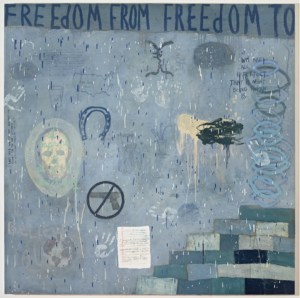

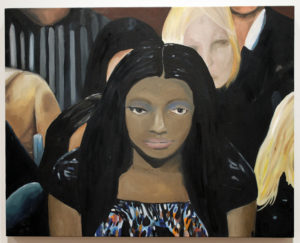
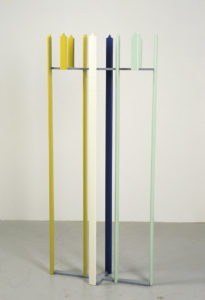
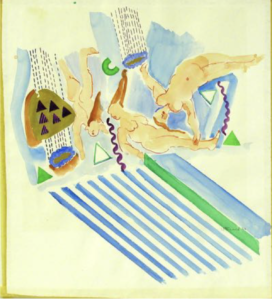
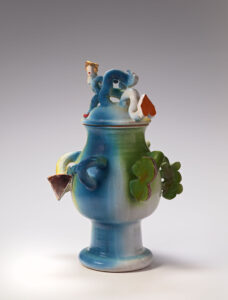

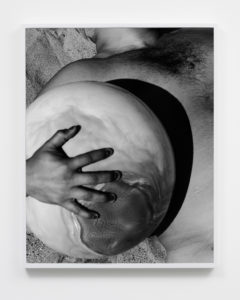
![“Liegende (gelb) [Lying (yellow)]” 1997](https://jamesharrisgallery.com/client-uploads/img/_artworkThumb/Ikemura-Lying-Yellow-1997.jpg)
